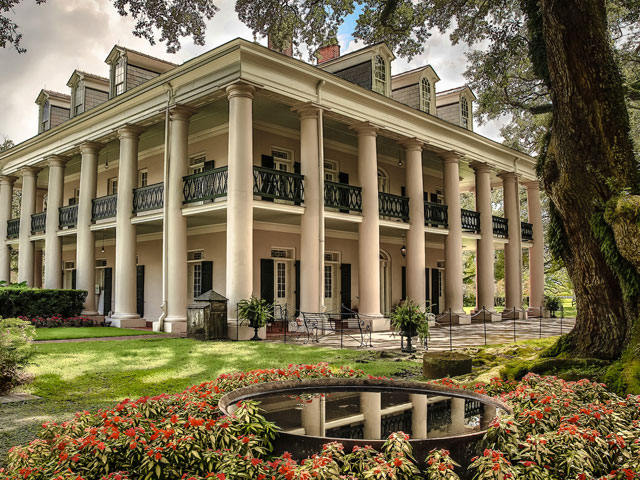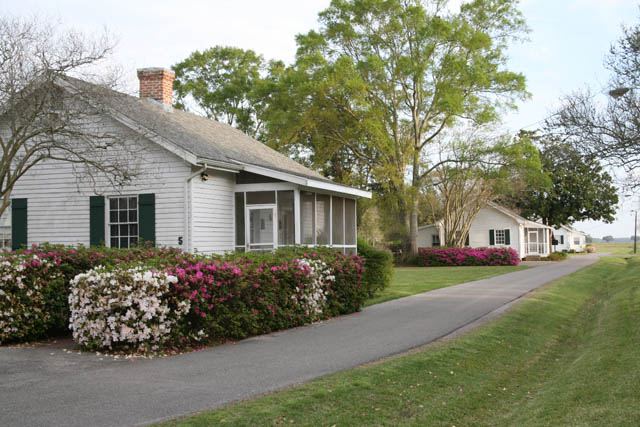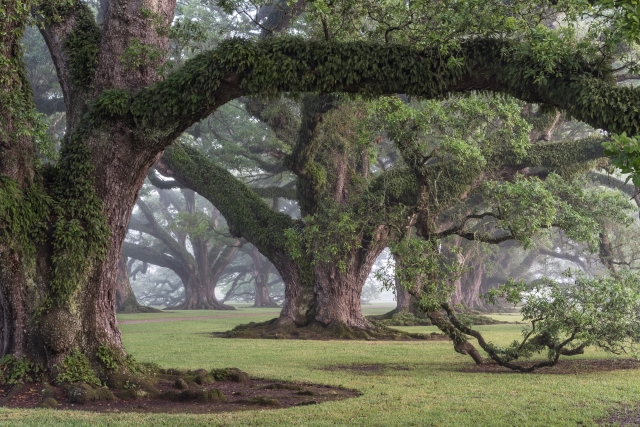

Gracing the banks of the mighty Mississippi River, Oak Alley Plantation is on Frommer’s list of “Louisiana’s Most Glorious Antebellum Mansions.” As visitors walk through and explore the well-manicured gardens and the iconic allée of oaks, they will witness the evolution of a plantation landscape over time through interpretive exhibits and unforgettable points of interest.
The site transitioned postbellum from a sugar plantation to an investment property, a cattle ranch, and eventually the National Historic Landmark you see today. Unlike so many properties that were lost to neglect, Oak Alley Plantation and its impressive tree-lined pathways stood the test of time. As you stroll through oak alley to the plantation’s iconic “Big House", you’ll see a glimpse of the antebellum South.

Oak Alley Plantation’s “Big House” was built in the early 1800s. The Greek Revival mansion is a masterpiece of symmetry with colonnades and wrap-around verandas. During your guided tour, historical interpreters expertly weave the story of the home’s many residents and the manor’s history. While the home’s spacious interior and fine period furnishings speak to the incredible wealth amassed by the first owners — the Louisiana-born, French-speaking Roman family — it is due to the skill of the enslaved craftsman that the house is still standing almost 200 years later. Be sure to visit the Collection Room on your tour, as it showcases photographs, correspondence, and artifacts found on the property, allowing visitors to learn more about life here over 200 years ago.
On the plantation grounds, self-guided tours take you through replicas of the slaves’ quarters, where you’ll learn about the enslaved people who made the sugar barons’ way of life possible. On most days, site interpreters lead the Conversation Series at the Slavery Exhibit and discuss this dark chapter in American history, encompassing all the harsh realities of the enslaved men, women, and children forced to labor in the fields and maintain the household. The sharp contrast of the “Big House” and the slaves’ cabins drives this reality home.
 Along with manicured formal gardens, you’ll find outdoor exhibits that highlight plantation work. In the Sugarcane Theater, visitors learn about sugarcane’s historical and present-day harvesting methods through a video and exhibits.
Along with manicured formal gardens, you’ll find outdoor exhibits that highlight plantation work. In the Sugarcane Theater, visitors learn about sugarcane’s historical and present-day harvesting methods through a video and exhibits.
A two-hour stay barely scratches the surface. For those who can’t extend their visit, the plantation’s website allows further research into the property’s timeline—and at no cost. For those with the luxury of time, the Oak Alley Plantation Restaurant & Inn is conveniently found next to the property. The quaint cottages provide an ideal jumping off point for discovering the rich cultural heritage of Oak Alley Plantation and the Louisiana River Region.